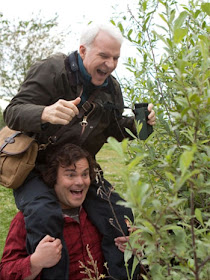I love fall. I love the crisp air, the changing leaves, the migrating birds passing through. And I love my patio and my bird bath. The patio with the deck overhead provides a sheltered place for me to relax and take everything in, even when its raining. And I never know what I might see. Sunday, for example, the unexpected.
Already seated, I had looked down at something, then up again to find a male bluebird drinking from the birdbath right in front of me. I caught my breath, feeling so excited to see a bluebird so close again. My resident bluebirds hatched their second brood in late summer. When the juveniles fledged, the parents only brought them back to the feeder area a couple of times, then they were gone. I mean, completely gone.
Without the need to protect their nesting territory for another nesting attempt, they had no reason to stay once the second brood juveniles fledged. This movement to different hunting grounds is an important survival behavior. The longer the bluebird family stayed in the nesting area, the more likely predators would detect the inexperienced fledglings.
The male flew up to a low branch and perched for a while, partially concealed by the leaves. I picked up my camera thinking he might return for another drink, but instead, his companion, a female, landed on the birdbath and drank. What a pleasure. It may seem like such a simple thing, but there are few things more beautiful or peaceful than sharing an intimate moment with a bird as it goes about its ordinary daily activities, seemingly undisturbed by your presence. (All the Eastern bluebird images you see here are of the female.)

And bluebirds are so quiet when they approach. They land with no fuss, no scolding, utter silence. And just as quietly, the female departed, joined in flight by the male as they flew in the direction of the front yard. They did not visit the mealworm feeder even though it had mealworms in it. I added them earlier when I first heard a bluebird singing near the yard. Maybe this pair was not familiar with mealworm feeders or maybe food is too plentiful this time of year for the feeder to draw their interest. But that's okay. The mealworms are not wasted. Most of the time, the titmice empty the feeder. Sunday, Carolina wrens also shared in the feast. It was while watching the Carolina wren at the feeder, that I spotted the hummingbird that also visited that morning.

A shy visitor, female or juvenile, she came back to the feeders several times but did not linger very long during any one visit. I was glad I happened to see her since she was the first hummingbird I've seen since Oct 9th. There are fewer and fewer hummers coming through now, generally late juveniles and late nesting females. It's easy to miss them and mistakenly think all the Ruby-throated hummingbirds have departed. This sighting on the16th of October is actually the latest date I've recorded a hummingbird in my yard in east TN in the fall. But even after November 1st, it is a good idea to leave at least one feeder out through the winter months. Other species of hummers have been documented in the east in the winter, and there are even a few records of Ruby-throats. In all, fourteen species have been documented in the eastern United states: Ruby-throated, Black-chinned, Rufous, Allen's, Broad-tailed, Anna's, Costa's, Calliope, Buff-bellied, White-eared, Green Violet-ear, Magnificent, Broad-billed and Green-breasted Mango. If you see a hummingbird after November 1st, contact Bob and Martha Sargent at Rubythroat@aol.com or 205-681-2888.

I certainly don't need three feeders out this time of year, but I think of them as welcome flags, along with the flowers that are still blooming, advertising an oasis for thirsty, late travelers. Below, a female Rose-breasted grosbeak that visited my sunflower feeder a week ago. She is just passing through, on her way to the West Indies, Mexico or South America to spend her winter. Many migrants are passing through our yards this time of year, both seen and unseen.
Fall is a beautiful, exciting time of year!
Next post: Fall color and more fun around the bird bath.
Links and Resources:
Blog posts on the
bluebird family that nested in my yard during the 2010 breeding season.
Learn more about how
bird banding helps us learn about hummingbirds.
Contacts for reporting sightings of hummingbirds during winter months in the east: Bob and Martha Sargent, Rubythroat@aol.com or 205-681-2888


















